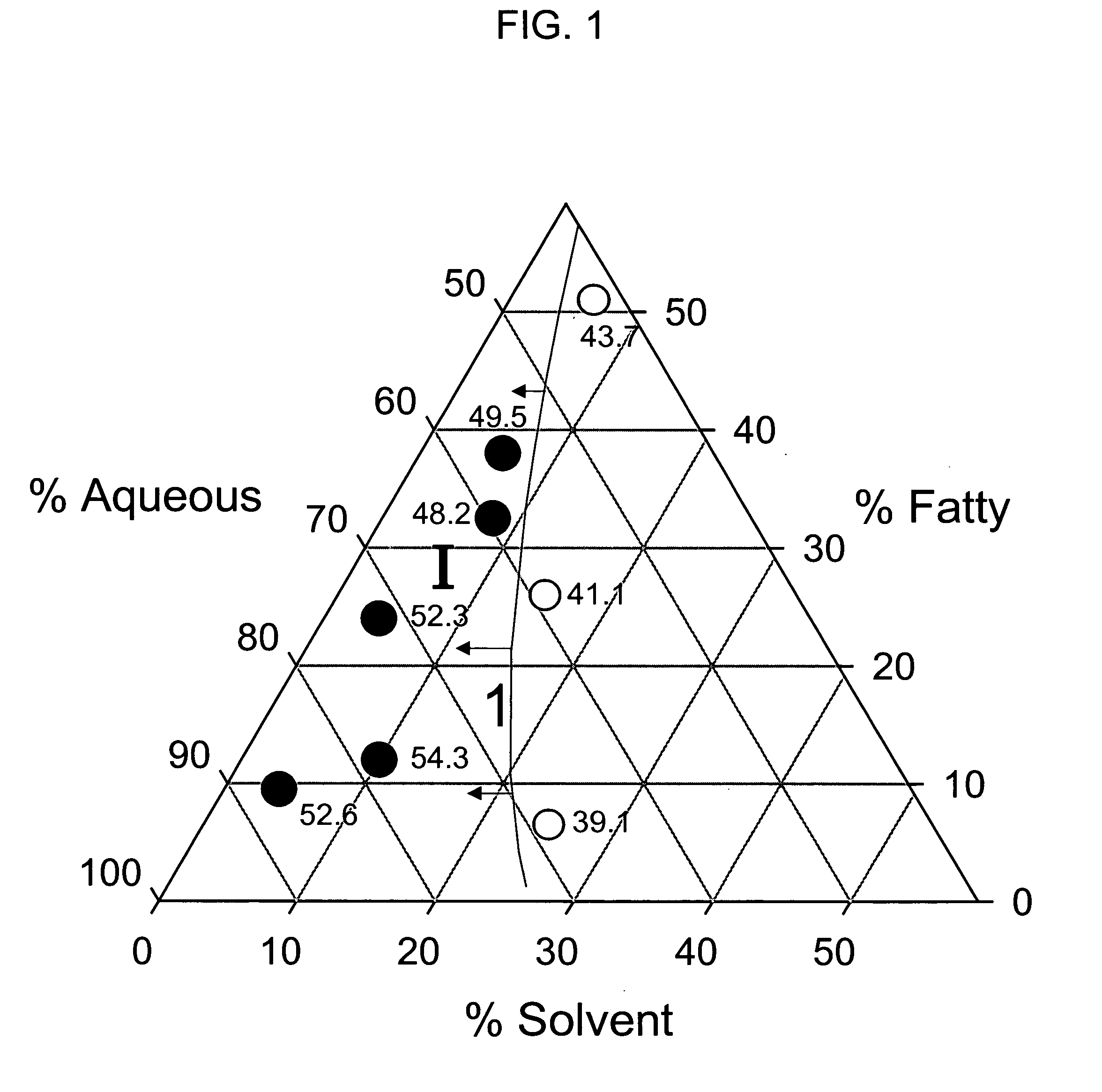Two step hair coloring compositions delivering deeper, long-lasting color
a hair color and composition technology, applied in the field of hair color compositions, can solve the problems of reducing the color intensity of the hair color, so as to achieve the effect of convenient practice of the color method disclosed
- Summary
- Abstract
- Description
- Claims
- Application Information
AI Technical Summary
Benefits of technology
Problems solved by technology
Method used
Image
Examples
example 1
Influence of Precursor Composition on Dye Retention
[0167] This example compares the bleaching performance in a 2-step process of a dye precursor composition containing the fatty amines of the instant invention with a precursor composition containing anionic surfactants of the type typically used in conventional 1-step hair coloring compositions.
[0168] Individual tresses (1.5 gm) of Piedmont hair were first treated for 20 minutes with a dye precursor mixture containing the aqueous ingredients, organic solvents, and fatty components shown in Table 1A. Example Ex 1 contains fatty amines while the comparative example, C1, contains anionic surfactants. The dye precursor mixture was distributed over the hair surface by means of a styling brush of the type commonly employed by salon stylists.
[0169] Following treatment with the precursor mixtures described above (20 minutes), the tresses were combed to remove excess mixture. Without rinsing, the tresses were then treated for an additiona...
example 2
Influence of Relative Proportions of Fatty Ingredients and Organic Solvent
[0172] Individual tresses (1.5 gm) of Piedmont hair were first treated for 20 minutes with a mixture containing oxidative hair dyes and different proportions of fatty components, organic solvent (propylene glycol or hexylene glycol) and water. The precursor was distributed over the hair surface by means of a styling brush.
[0173] All treatments mixtures contained a constant level of the ingredients shown in Table 2A.
TABLE 2AIngredients and levels common to all dye precursormixtures of Example 2Wt % basedIngredienton total mixturePhase Locationp-aminophenol0.70Aqueous5-amino-o-cresol0.75″Citric acid0.1″Sodium sulfate0.2″Potassium chloride0.01″Cyclopentasiloxane1.8Part of fatty phase
[0174] The fatty ingredients of the dye precursor mixtures consisted of a mixture of amphiphilic ingredients (fatty alcohols, fatty alcohol ethoxylates, and fatty amines) and the volatile silicone, cyclopentasiloxane. Amphiphilic ...
example 3
Comparison of Hair Damage from Instant 2-step Coloring System with a 1-step Coloring System using a Commercial Coloring Base
[0179] This example demonstrates that the two 2-step dyeing process using the optimal precursor compositions as described herein induces less damage to hair than a commercial 1-step coloring process. Tresses of virgin hair were treated with the dye precursor composition, Ex 3, set forth in Table 3A for 20 minutes using the procedures described in Example 1. The hair was then combed to remove excess precursor solution as well as to align the hair. Without rinsing, the hair was treated with the same developer mixture as used in Example 1 and shown in Table 1B for 25 minutes.
[0180] Approximately one half of the tresses as treated above were then treated a second time under identical conditions to simulate multiple hair coloring.
TABLE 3ADye pecursor composition of Example 3ComponentWt %of PrecursorIngredientsof totalMixtureEx 3mixtureAqueousHydroxypropyl starch...
PUM
| Property | Measurement | Unit |
|---|---|---|
| pKa | aaaaa | aaaaa |
| pKa | aaaaa | aaaaa |
| pKa | aaaaa | aaaaa |
Abstract
Description
Claims
Application Information
 Login to View More
Login to View More - R&D
- Intellectual Property
- Life Sciences
- Materials
- Tech Scout
- Unparalleled Data Quality
- Higher Quality Content
- 60% Fewer Hallucinations
Browse by: Latest US Patents, China's latest patents, Technical Efficacy Thesaurus, Application Domain, Technology Topic, Popular Technical Reports.
© 2025 PatSnap. All rights reserved.Legal|Privacy policy|Modern Slavery Act Transparency Statement|Sitemap|About US| Contact US: help@patsnap.com

